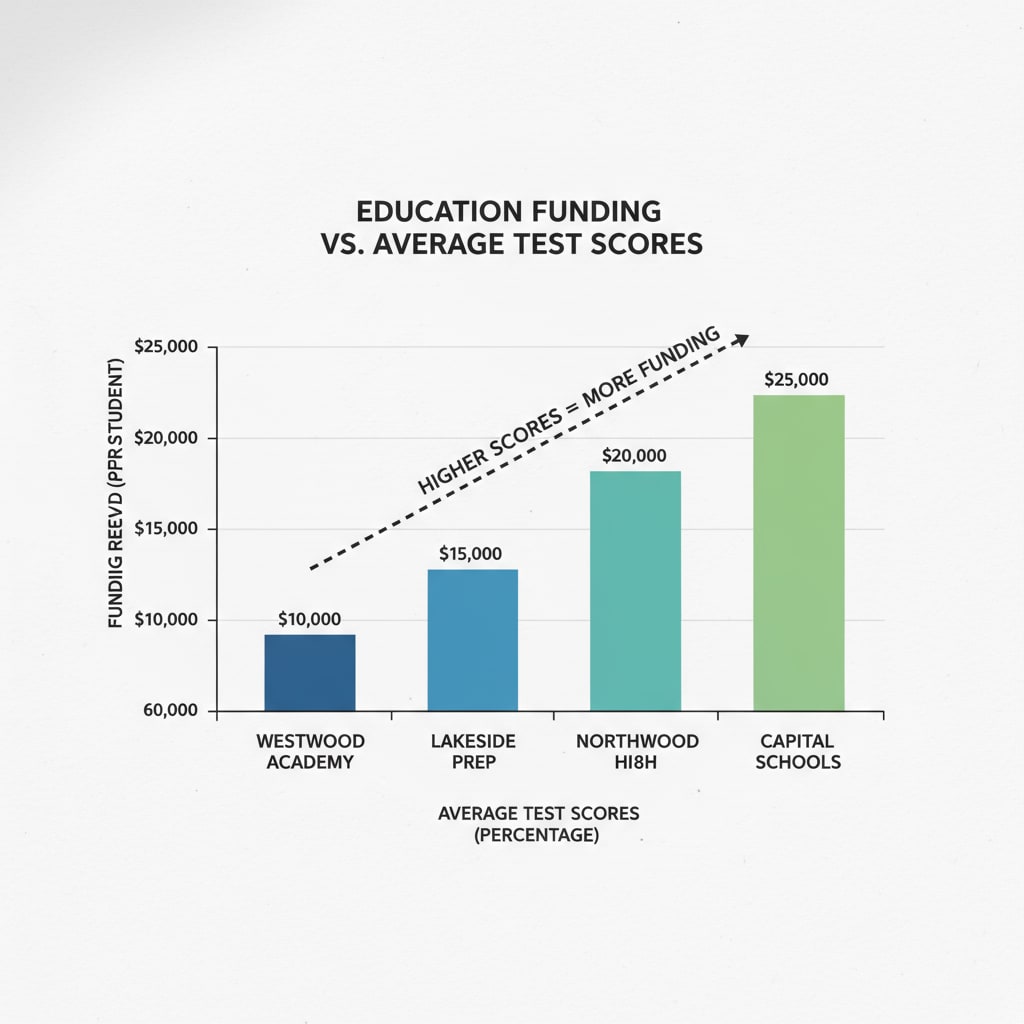The “No Child Left Behind” policy in the United States aimed to improve educational standards. However, it brought to light a significant contradiction between education funding mechanisms and real teaching quality. The policy linked education funding to test scores and attendance, creating a situation where schools were incentivized in unexpected ways.

The “No Child Left Behind” Policy Basics
The “No Child Left Behind” (NCLB) policy was introduced with noble intentions. Its goal was to ensure that every child, regardless of background, received a quality education. As stated on Wikipedia’s page on NCLB, NCLB required states to develop assessment systems to measure student progress. But this led to a heavy emphasis on standardized test scores as a primary indicator of educational success.
The Link between Funding and Test Scores
Under NCLB, schools’ funding became closely tied to students’ performance on standardized tests. This meant that schools with higher test scores were more likely to receive adequate funding, while those with lower scores faced cuts. For example, if a school’s students consistently scored poorly on math and reading tests, the school might struggle to afford necessary resources. As a result, schools started to focus more on test preparation rather than holistic teaching. This is evident in how teaching methods often revolved around getting students to perform well on specific tests, rather than fostering critical thinking and creativity.

The Impact on Teaching Quality
This focus on test scores had a detrimental effect on real teaching quality. Teachers were under pressure to “teach to the test,” which limited their ability to explore diverse teaching methods and engage students in meaningful learning experiences. According to Britannica’s entry on NCLB, the narrow focus on test performance led to a neglect of other important aspects of education, such as art, music, and physical education. These subjects were often sidelined to make more time for test preparation.
In addition, the pressure to improve test scores also led to a rise in unethical practices in some schools. There were instances of teachers inflating scores or providing improper assistance during tests, all in an effort to secure the school’s funding. This further undermined the integrity of the educational system.
Readability guidance: As seen, the “No Child Left Behind” policy, with its link between education funding and test scores, created a complex situation. Schools were caught in a dilemma of choosing between meeting the requirements for funding and providing a well-rounded education. This shows that the current approach might need reevaluation to ensure that educational resources are used to truly enhance teaching quality and student learning.


